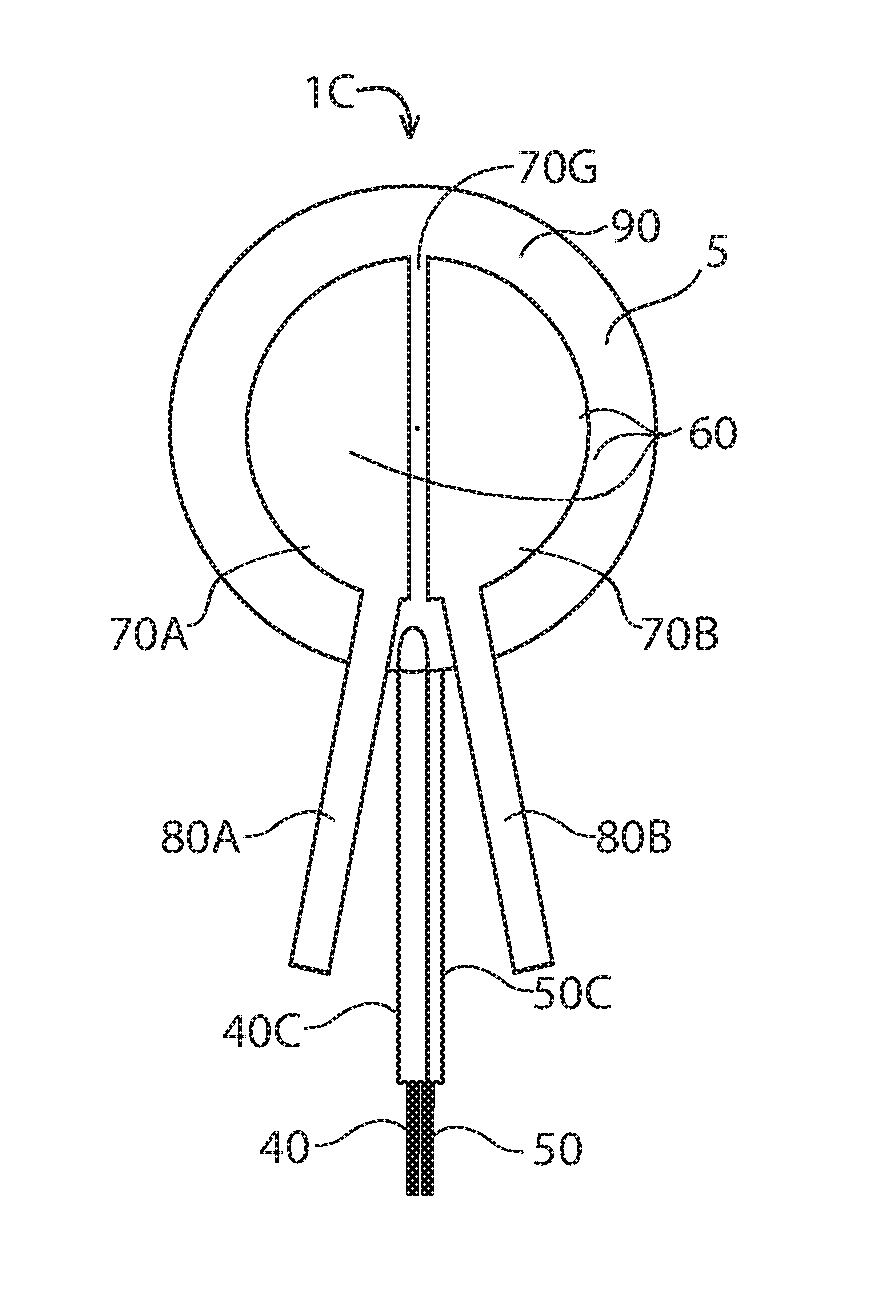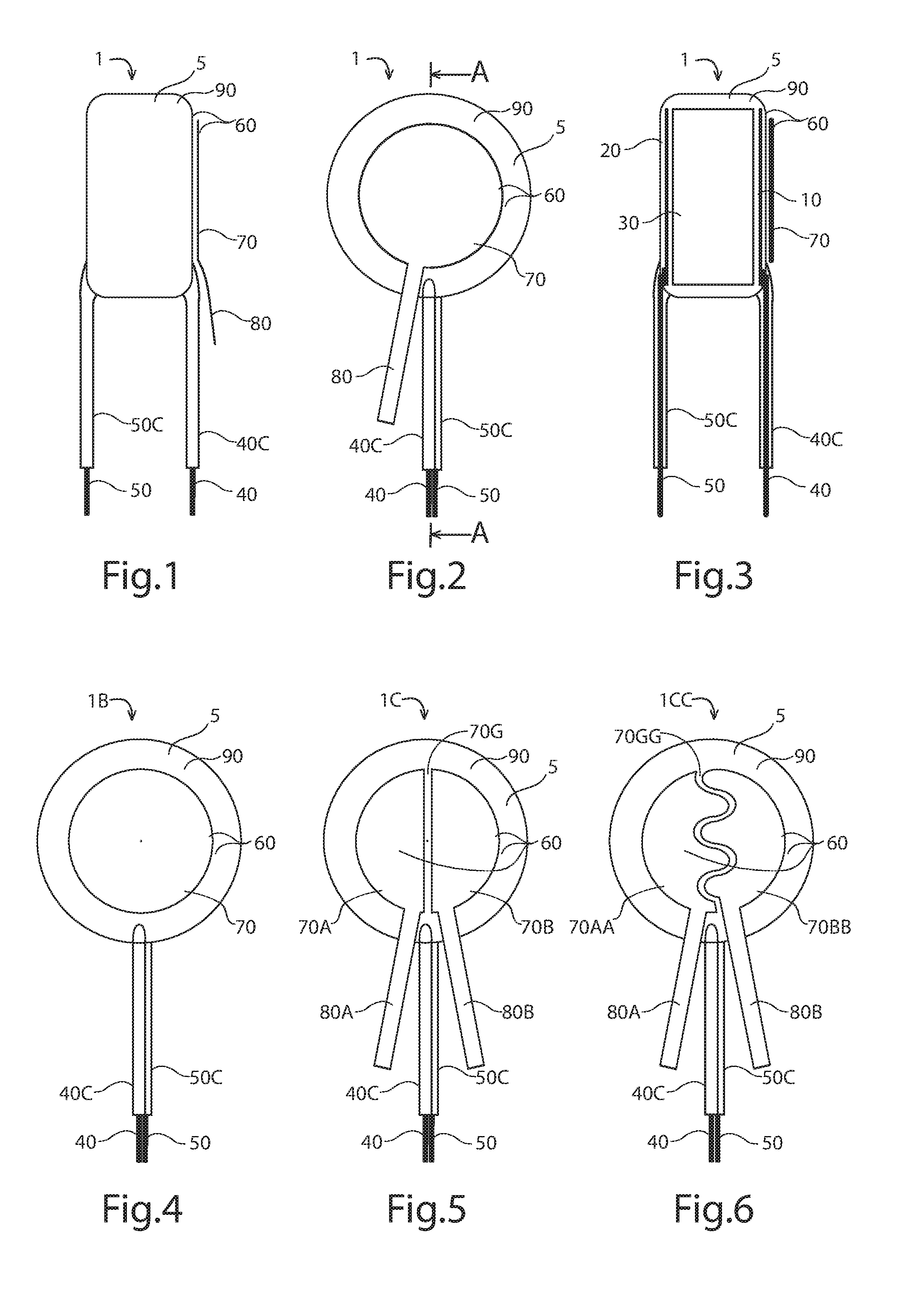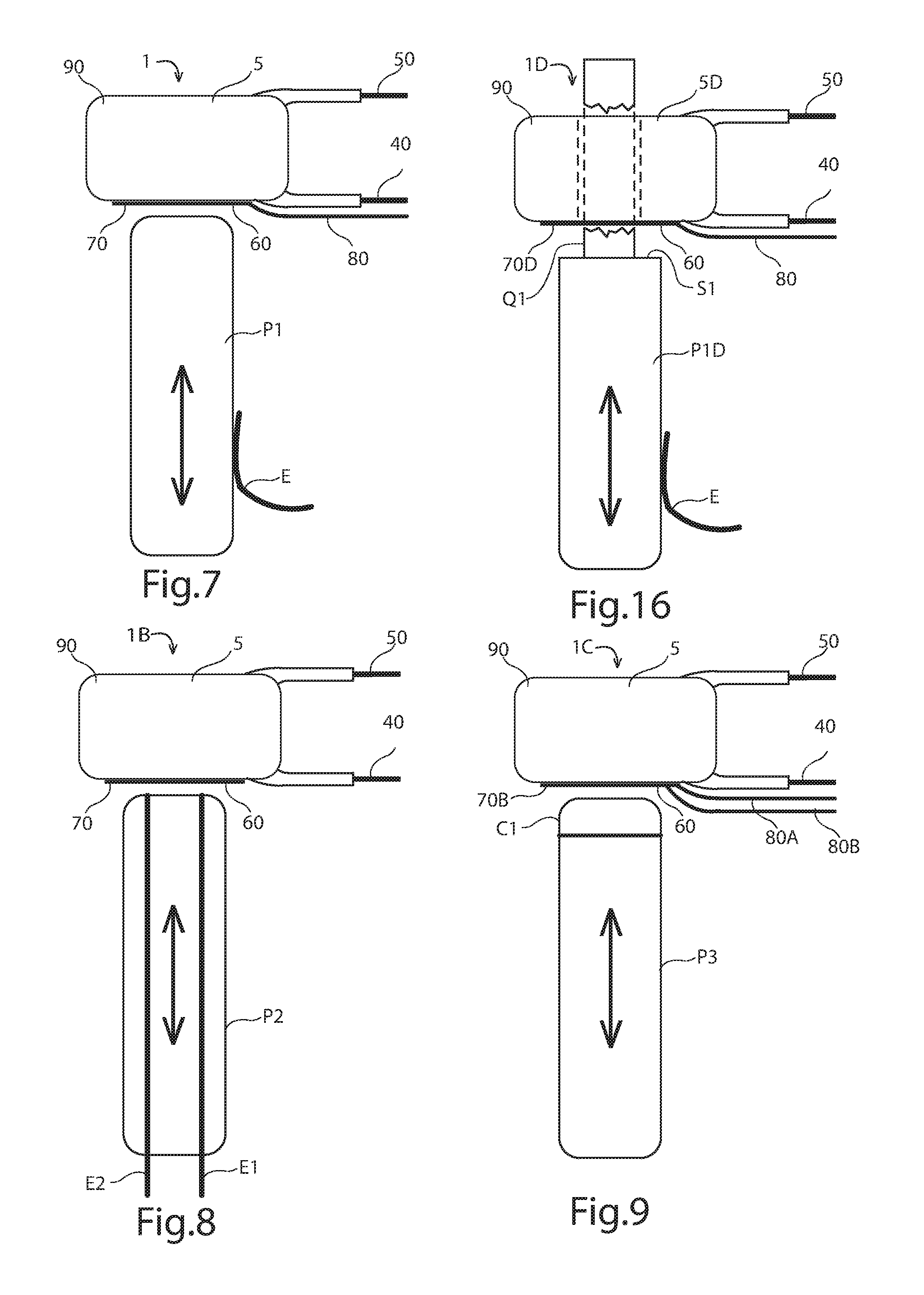Force sensing resistor with external conductive layer
a resistor and resistor technology, applied in the field of force sensing resistors, can solve the problems of nonlinearity of resistance change and difficulty in initial contact detection
- Summary
- Abstract
- Description
- Claims
- Application Information
AI Technical Summary
Benefits of technology
Problems solved by technology
Method used
Image
Examples
second embodiment
[0031]FIG. 4 shows a plan view of a FSR having a conductive surface. The external conductive layer 70 of FSR 1B has no lead extending from it.
third embodiment
[0032]FIG. 5 shows a plan view of a FSR having a plurality of conductive surfaces. The FSR 1C has a plurality of external conductive layers 70A, 70B, each having a separate lead 80A, 80B respectively. There is a gap 70G between the plurality of external conductive layers 70A, 70B to prevent electrical conductance between the plurality of conductive layers unless and until the gap 70G is bridged by contact with a conductor.
[0033]FIG. 6 shows a plan view of a variation of a third embodiment of an FSR having a plurality of external conductive layers. FSR 1CC has a plurality of external conductive layers 70AA, 70BB. The gap 70GG between the external conductive layers is a wavy path. When in use, the wavy path of gap 70GG reduces the risk that a conductor pressing against the contact surface 60 of the FSR 1CC will fail to bridge the gap to allow conductance among the plurality of conductive layers.
[0034]FIG. 11 shows a plan view of another variation of a third embodiment of an FSR having...
PUM
| Property | Measurement | Unit |
|---|---|---|
| conductive | aaaaa | aaaaa |
| flexible | aaaaa | aaaaa |
| flexible conductive | aaaaa | aaaaa |
Abstract
Description
Claims
Application Information
 Login to View More
Login to View More - R&D
- Intellectual Property
- Life Sciences
- Materials
- Tech Scout
- Unparalleled Data Quality
- Higher Quality Content
- 60% Fewer Hallucinations
Browse by: Latest US Patents, China's latest patents, Technical Efficacy Thesaurus, Application Domain, Technology Topic, Popular Technical Reports.
© 2025 PatSnap. All rights reserved.Legal|Privacy policy|Modern Slavery Act Transparency Statement|Sitemap|About US| Contact US: help@patsnap.com



